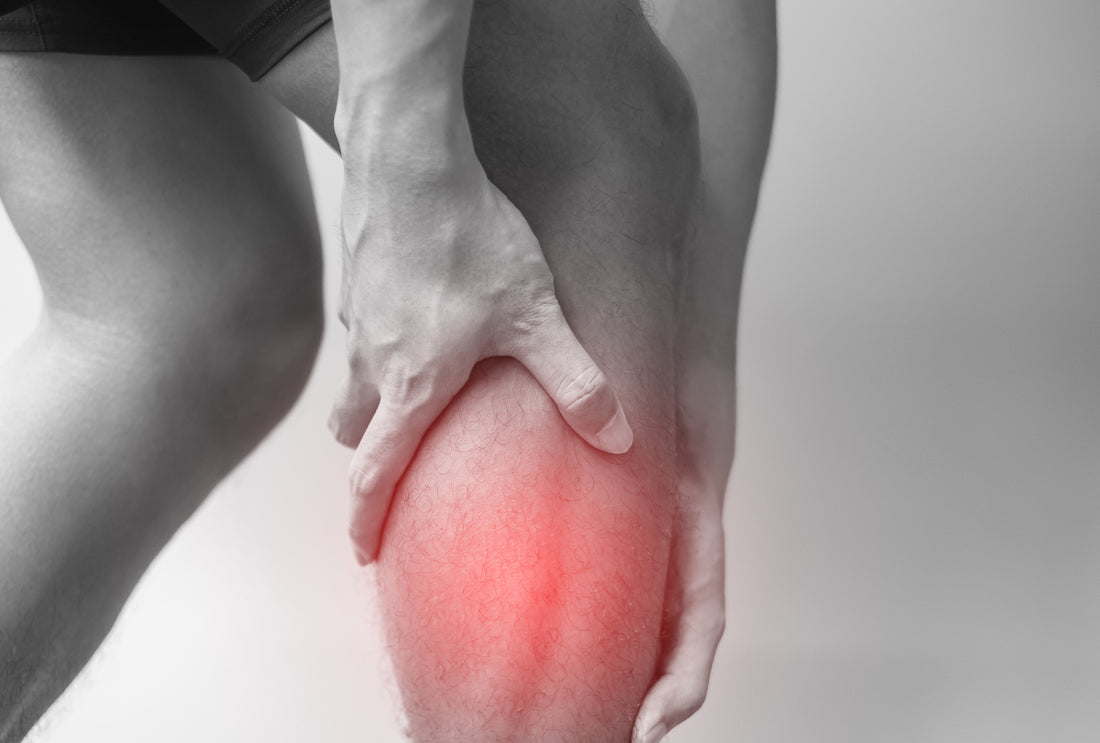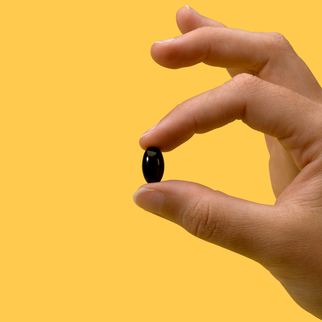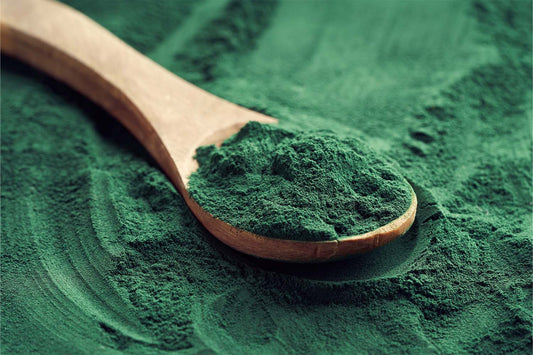Muscle strain — also known as a pulled muscle — is a term that sends a shiver down the spine of athletes and fitness enthusiasts alike. Whether you're an experienced gym-goer, a weekend warrior, or someone simply looking to stay in shape, you're likely familiar with the inconvenience and discomfort that muscle strain can cause. It can happen while lifting weights, going for a run, or even during day-to-day tasks.
When you end up with a muscle strain, it can be pretty uncomfortable and can largely interfere with your daily activities and tasks. How can you support a speedy recovery and get back into action sooner?
Let's dive into the sea of knowledge about muscle strain and what you can do at home to help your muscles heal.
What Is Muscle Strain?
Muscle strain is a condition that occurs when your muscle fibers tear due to overstretching or overuse. This can happen during everyday activities, but it's particularly common during sports and exercises that involve sudden movements, heavy lifting, or not warming up properly.
When you strain a muscle, you'll likely feel pain right away. Symptoms may include swelling, bruising, redness, and difficulty using the muscle. The severity of muscle strain varies, from a minor stretch to a complete tear of the muscle — which, as you can imagine, is considerably more painful and serious.
Now, onto the healing process. Your body is a fantastic machine that naturally sets to work repairing these tears. However, this process can take time — often several weeks, depending on the severity of the strain.
Several factors can influence this recovery timeline, including your age, overall health, and the extent of the strain. But here's the good news — there are methods to support your body's healing process and potentially speed up recovery.
Rest, ice, compression, and elevation (fondly known as RICE) are often recommended immediately after the injury. Physical therapy and gentle exercises can also play a role as your muscle heals.
How Can You Recognize a Strained Muscle?
You may not realize you’ve strained a muscle right away, but many people do. With a pulled or strained muscle, some symptoms are often instantaneous — the muscle may “pop” or suddenly feel painful.
A muscle strain might bring on immediate, stabbing or sharp pain in the affected area. Other symptoms include:
- Pain and tension
- Redness
- Limited range of motion
- Muscle spasms or weakness
- Swelling
If you notice any of these symptoms during a workout or other activity, stop what you’re doing — pushing through it could make it more severe. Consult your doctor to confirm the type of injury you’re dealing with, especially if your symptoms are particularly intense.
How Can You Support Your Muscle Strain Recovery?
When you strain a muscle, your body's natural response is to inflame the area.This is part of the healing process, but it can also cause pain and discomfort — not to mention get in the way of your plans. So, what can you do to support proper muscle recovery? Let’s take a closer look.
Follow Your Healthcare Provider’s Instructions
Whenever you’re dealing with an injury, it’s always crucial to listen to your doctor. Your doctor knows how to best address various forms of illness and injury, and they should be your go-to resource for personalized health advice.
Following your doctor’s instructions is the best way to ensure you’re making informed choices during your muscle strain recovery period.
Use Ice
A generally accepted method of treatment for a wide range of injuries is to ice the affected area. Ice can help soothe the area, bringing down swelling or inflammationand supporting your comfort and mobility. Just grab a cold pack and lay it across the strained muscle while you watch TV or read a book, for example — it does all the work for you.
Elevate the Affected Muscle
Elevating your strained muscle can help maintain healthy blood flow and blood pressure, which may help your body heal and repair itself.
Some research shows that elevation may also help your lymphatic system function, working to ease swelling.
Rest Up
When your muscles are injured and working overtime to heal, it’s essential for you to rest up. Don’t push yourself to get back into the gym as soon as possible — if you do, you run the risk of making your injury worse or sustaining a new injury as a result of poor form during a workout.
Take this time to get your rest in and let your body do its job.
Try Gentle Stretching
With your doctor’s approval, you may be able to do light, gentle stretching toward the end of your recovery period.
Stretching may help you ease your muscle back into action without overexerting yourself or pushing your muscle’s limits, and may help soothe any stiffness or tension you might have after staying off of your injured muscle for a week or two.
Revamp Your Diet
Along with methods that target the specific injury, you can also support your recovery by supporting your overall health and wellness — and one of the best ways to do this is with your diet.
Make sure your diet is full of key vitamins and minerals, especially while you’re healing, to give your body everything it needs to thrive. Minerals like magnesium and calcium are key players for muscle health, and vitamins like vitamin D and vitamin B12 can support recovery, too. It’s also best to focus on getting proper protein, complex carbs, and healthy fats.
These methods can help you make the most of your muscle recovery — but at the end of the day, it’s best to give your body all the time it needs to properly repair itself and recover. Patience is key, as trying to rush your recovery may do more harm than good.
When Should You Call Your Doctor?
If your symptoms worsen over the course of a week or two or fail to improve, it’s time to get back in touch with your doctor. There’s always a chance that you might be dealing with something other than a strain or that your strain has worsened if you didn’t rest the area properly.
Your doctor will be able to guide you through an action plan, including what the next steps should be to ensure your muscle heals properly. In some cases, physical therapy may be recommended to help support proper muscle recovery.
The Bottom Line
So, there you have it – a deep dive into how you can help your muscle recover after a strain. The key lies in listening to your doctor, getting some rest, and proceeding with caution until you’re in the clear.
Whether you're an athlete, a fitness enthusiast, or simply someone who likes to stay active, supporting your muscle health is key for performance and mobility. Remember, it's not just about recovering; it's about giving your body the tools it needs to bounce back stronger and perform better.
As you continue on your fitness journey, iwi life is your go-to for tips, tricks, and wellness guides. Wellness is a journey, and every step you take brings you closer to your goals.
Sources:
Muscle Injuries: A Brief Guide to Classification and Management | PMC
Response of Muscle and Tendon to Injury and Overuse | NCBI Bookshelf
Muscle Strains - Symptoms and Causes | Mayo Clinic
Muscle Damage and Inflammation During Recovery From Exercise | NCBI Bookshelf
Plan Your Plate | News in Health
When to Use Ice and When to Use Heat for Aches and Pains | Beaumont Health



















